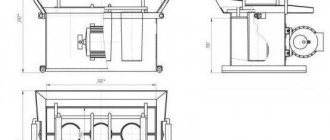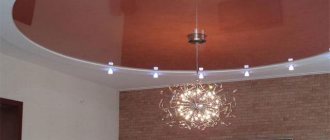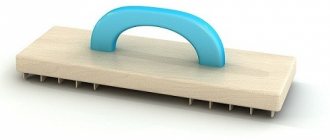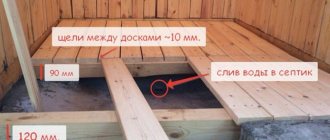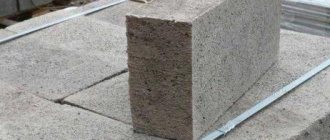Purpose and benefits of home installation
The machine is manufactured for your own economic purposes. Both the complexity of the design and the engine power depend on this. In general, it can perform the same work as professional installations:
- turning of different surfaces (in the form of cylinders, cones);
- thread making;
- pruning work;
- end metalworking.
Thanks to such a wide functionality, this device can be used to sharpen knives, repair some car parts, cut metal structures, etc.
At the same time, making a lathe with your own hands is a more profitable option because:
- such a product will cost less;
- it is not as bulky as many industrial installations;
- it can be designed and performed for specific tasks required by the owner;
- It can be easily placed in a garage, shed and mounted on any hard surface.
What is turning?
The technological process of turning consists of reducing the diameter of the workpiece using a cutter, which is equipped with a special cutting edge.
Due to the rotation of the workpiece, the cutting process occurs; feed and lateral movement are carried out by the cutter.
Thanks to these three components: rotation, feed, movement, it is possible to influence the amount of material removal; the quality of the machined surface, the shape of the chips, etc. also depend on this.
Basic elements of a lathe:
Bed with guides for the tailstock and support;
At the front of the bed is the headstock, as well as the spindle and chuck;
A gearbox is attached to the front part of the frame;
Support with slide for cross-cutting;
The cutter holder is located on the cross slide.
These elements are the main ones; depending on the modifications, you can get centering, turret lathe, multi-cutting and other machines that must undergo mandatory maintenance.
Features of a homemade lathe
A homemade metal lathe, as a device assembled with your own hands, has a number of operational features that are important to consider when working on it:
- Since work with workpieces is always accompanied by large vibration vibrations, it is important to ensure the same location of the driving and driven installations - they must be along the same axis.
- The use of commutator electric motors is an undesirable option, since often in these mechanisms the speed of revolutions per minute can arbitrarily increase; This is dangerous because the workpiece may fly out.
- If it is impossible to install another electric motor, then in the case of installing a commutator motor, it is necessary to equip it with a reduction gearbox - this will compensate for the uneven running of the mechanism.
- The optimally suitable electric motor is an asynchronous one, whose speed does not deviate significantly.
- The driven center may consist of a static or moving structure; in any case, it is made from an ordinary bolt, which is processed so that the barrel takes the shape of a cone - it is with its help that it can rotate.
Manufacturing
A homemade device is suitable for performing several actions:
- end processing;
- pruning work;
- cutting internal and external threads;
- turning.
When assembling, it is necessary to take into account a number of features:
- For a commutator motor, you need to install a gearbox. It is necessary to compensate for the uneven movement of the main mechanisms.
- Before assembly, you need to think about the location of the main parts and how to connect them.
- It is better to entrust the work on connecting electronics to a specialist so that a short circuit does not occur during operation of the equipment.
A homemade machine can be used for making metal parts, sharpening tools, and repairing car parts.
Brushed motor (Photo: Instagram / rckostroma)
Drawing up a drawing
Before you start assembling homemade equipment, you need to prepare a drawing. On it you need to draw the machine from different sides and indicate:
- equipment dimensions;
- location of main parts;
- fastening places.
You can find the drawing on the Internet or prepare it yourself.
Preparation
After drawing up the diagram, you need to prepare a place to place the equipment. There must be enough free space so that you can walk around the equipment from different directions. If the structure is large and heavy, it is necessary to make a separate base for it.
Tools and Supplies
For assembly you need to prepare:
- profile pipes, metal corners;
- metal sheets for housing assembly;
- drive belts of different diameters;
- nuts, bolts for fastening individual parts;
- steel rods;
- spindle (it can be made from a bolt that has a sharpened end;
- wires, buttons, regulators;
- bearings;
- steel plates;
- clamps for holding incisors;
- a set of keys;
- welding machine;
- bushings;
- grinder;
- drill and metal drills.
You also need to pay attention to the choice of electric motor. For processing small workpieces, a motor with a power of no more than 1 kW is suitable, for example, an electric motor from a food processor, sewing or washing machine. If you have to work with large parts, it is better to choose a motor with a power of 1.5 to 2 kW.
If you don’t want to assemble a real lathe, you can make a compact model from a drill. The body is assembled from thick plywood. The power tool is secured in a holding device. The more powerful the drill, the more technological operations can be performed on a homemade lathe.
Drill (Photo: Instagram / skupka25kopeek)
Assembly
The manufacturing process consists of several stages:
- Frame assembly. It can be welded from metal pipes and corners.
- Manufacturing of side racks.
- Connection of racks.
- Installing bushings on guides. They are needed to install the tailstock.
- Making a platform from steel plates on which the quill and caliper will be installed.
- Installing the lead screw.
- Fastening the steering wheel and vernier.
- Making a second metal platform on which the headstock will be attached.
- Assembly of the tool holder and caliper.
- Electric motor installation.
- Connecting the remaining elements, securing the belts.
- Connecting wires, setting up equipment.
Preparatory stage: design and drawings
At the preparatory stage, it is important to understand what components the future metal lathe will consist of. Based on this, suitable units and parts are selected from available materials. It is important to consider what specific tasks the mechanism will be focused on and what it will be used for.
In principle, the installation should consist of the following elements:
- Electric motor with transmission to the drive mechanism. Working units from old washing machines are often chosen. Usually the power is selected in the range of 1000-1500 W. This is enough for household work.
- Connecting parts (metal corners, bolts).
- Housing and metal base (pipe, channel).
- Running gear – handle for longitudinal movement, bearings.
- Supporting part (frame structure).
- Thrust mechanism with cutters.
- The tailstock and the front headstock – ideally, can be taken from another machine.
The diagram of the finished device is shown in the photo.
When all the parts are available, you can draw up a schematic drawing of the product. You can take the following drawings as a basis.
The assembled lathe, its main elements can be seen here.
NOTE. It is best to make a metal lathe with your own hands from metal products (pipes, angles, etc.). Any wooden structure is short-lived, and working with the part will be much more difficult.
Precision and performance of a homemade device
If the task is to create a machine for processing metals by cutting with a high degree of accuracy, you need to pay special attention to the guides and the bed. Many people make structural elements from wood, this is a fun budget solution, but it will not provide the required accuracy simply because the material of the bed and guides must be harder than the part being processed.
Therefore, all beds and guides for metal lathes are made only of metal. It is advisable to use factory guides, but if this is not possible, which happens most often, then you have to use rolled metal, as in the example we gave from an ancient English magazine. That is, all the parts that are responsible for accuracy and strength must be made in production conditions, such as this option, where automobile connecting rods are used as centering elements.
Carrying out a metal lathe is creative and unhurried work. You need to think through all the details a hundred times, draw a couple of dozen drawings, and only then start manufacturing the machine in metal. But in any case, direct hands and ingenuity will lead to the successful creation of a practical and functional lathe. Good luck in the field of small engineering!
Reading time: 9 minutes No time?
Every home craftsman would like to have a metal lathe in his arsenal of tools. Such equipment allows you, if necessary, to turn a broken part yourself, cut a thread, make some kind of trinket and much more. However, since industrial units are not affordable for everyone, and they take up a lot of space, most craftsmen prefer to make compact homemade metal machines with their own hands.
Read in the article
Making a bed: step-by-step instructions and video
Further actions consist of manufacturing the support unit (frame), installing the working equipment, connecting it to the electric motor and direct commissioning. The sequence of actions is as follows:
- First you need to make a frame, which can be cut from steel pipes (profiles) in accordance with the dimensions in the drawings. All joints must be made only at right angles, so you can check the correctness of the connection using a regular square. The bed is made of guides. which can be used as long shafts.
- The side posts of the frame should be given special attention, since they are load-bearing elements. Consequently, the immobility of the entire structure largely depends on them. It is best to make the stands on a professional lathe.
- Next, you need to assemble the entire support installation: the side elements go along the edges, between them there are 2 guides. Bushings are mounted on the guides at a certain interval, as shown in the photo.
- Next, the bushings are fixed, with the help of which the tailstock and tool holder will be attached. In this case, it is better to make sure that the bushings are of different sizes, since the movement of the mechanism in this case will be greater.
- The surfaces for mounting the caliper are made of ordinary steel sheets. It is important that they are free from defects and even. The optimal sheet thickness is within a centimeter.
- Next, the lead screw is installed. You can make a carving on a metal stick, but there are simpler options - for example, use the leg from an old swivel chair
- When installing the screw, it is important to ensure that the side posts are equipped with bushings. A steering wheel is attached to the propeller itself to allow rotation, as well as a vernier.
- After this, the surface is mounted on which the headstock will then be installed.
NOTE. The holes on these sheets are also made on a professional machine. They need to be made with particular precision, since even small errors will not allow the device to function normally - the working parts will periodically get stuck.
After this, the frame is completely assembled. It is important to take into account that all elements are tightly connected - the slightest slack is unacceptable, since during operation vibration swings will increase the fragility of the mechanism and can lead to damage.
Visual instructions for installing the frame are in this video.
Maintenance of a homemade unit: what actions must be performed
Before work, it is necessary to inspect the technical condition of the device. Check the free rotation of the bearings and the condition of the insulation in the wiring leading to the motor. The first parts need to be lubricated. A homemade turning unit requires the same careful attention as industrial options.
Factory-produced professional lathes: cost of equipment
Factory devices are technology on a completely different level. The processing power and precision correspond to the high price. They are reliable and durable. The price depends on the diameter of the workpieces processed, functions and weight. It varies from ten to fifty thousand rubles, there are copies that are more expensive.
Assembling the mechanism with your own hands: step-by-step instructions and video
Further work is aimed at installing the mechanism itself and fixing it on the working surface. The algorithm is as follows:
- If it is not possible to take a headstock from an old machine, you can also make it yourself. To do this, take the shaft and install it on the support using bolts.
- Similarly with the tailstock: if it is not ready-made, it can be made using a screw, profile and bushing. A handle from any mechanism is also selected and mounted into a single mechanism.
- The next stage is to assemble the caliper, similar to the technology for assembling the frame.
- The tool holder, which is manufactured next in line, is based on a regular plate, which should preferably be at least 10 mm thick. Fastening to the caliper using bolts.
- The subframe can be welded from profile pipes. Its dimensions must exactly match the finished product, since otherwise it will be quite difficult to change the position of the belt.
- The final stage is to install an electric motor with a belt drive.
Video: DIY mini lathe. Headstock
It is important to first do the first start at idle speed, and then check the operation of the entire device on a rough metal part.
Repairing the caliper carriage
Restoring the accuracy of the lower guides, which are associated with the base guides, without taking into account wear - this is where you need to start repairing the caliper carriage.
Also, when repairing the carriage, it is necessary to restore the perpendicularity of its plane under the apron of the base plane (under the gearbox).
IMPORTANT TO KNOW: Assembling a sheet bending machine with your own hands
The location of these planes is measured by a level. The thickness of the probe placed under the carriage will determine the level of deviation (value).
The parallelism of the longitudinal guides and their parallelism to the axis of the transverse feed are also subject to restoration.
The longitudinal and transverse guides must be exactly aligned with each other.
It should be noted that repairing a caliper carriage is a very labor-intensive process; it is very difficult to do it yourself, so the company must schedule maintenance of the device on a schedule.
The carriage guides can be restored using compensation pads or acrylic plastic.
The cross slide of a screw-cutting lathe can be repaired by grinding. The rotary sled begins by scraping the surfaces, after which they begin sanding.
If necessary, the upper skids are also repaired.
To do this, the surface is scraped, aligned, polished, after which the accuracy of the surfaces’ mating with the guides of the rotary slide must be checked.
See the video for scraping the cross carriage.
Lathe from a drill: assembly algorithm
To use the device in a city apartment, it is quite possible to create a homemade metal lathe from an ordinary drill in a few hours. It will serve both as an engine and a rotating mechanism. The design is not so powerful, but it is quite suitable for performing small tasks.
It is advisable to attach the drill to a metal structure - an old stand is ideal.
The manufacturing algorithm is as follows:
- First, as always, the frame is made. Moreover, if you have a reliable workbench with a smooth surface, then it can serve as a support, and then the bed will not be needed.
- Then the wooden bases of the structure are created or a ready-made metal stand is selected. It is important to securely fasten the drill head to the base. This can be done using a regular clamp.
- The emphasis on the other side can be made using bars of the appropriate size. They are fixed to the surface with self-tapping screws. All other assembly stages do not differ fundamentally from conventional devices.
Video: do-it-yourself lathe from a drill
The installation can also handle wooden products - with its help you can apply simple relief carvings to a wooden workpiece, as shown in the video.
HELPFUL ADVICE. Working on a drill lathe is not limited to just cutting parts and sharpening. You can install a copier on it, with which you can create perfectly similar parts at home in a matter of minutes.
Mini-machine: manufacturing video
Often, for household purposes, you need a small homemade metal lathe - here is a video with clear step-by-step instructions for making it.
What does a lathe consist of: main components
For the most part, industrial and household lathes are similar. The difference lies in functionality, power and weight. The figure below shows the structure of a typical screw-cutting lathe. The main nodes are:
- bed;
- caliper;
- headstock (placement of the gearbox to adjust the rotation speed and change the amount of torque);
- tailstock (for more stable and reliable support of the workpiece or part clamped in the chuck (spindle), as well as for installing drills, taps and other tools);
- tool holder
bed
One of the main elements is the frame - a massive metal base on which all the main components and parts of the equipment are mounted. It must be strong enough, and the mass must be such as to prevent the machine from tipping over during operation. For the floor version, massive supports (pedestals) are added.
Lathe bed
Lathe support
The lathe support is designed to move along, across and at an angle to the spindle axis of the cutters fixed in the tool holder. The device has a cross design, consisting of three main elements: a carriage, a transverse and a cutting slide.
Read also: How to polish a stainless pipe
Making your own lathe headstock
The headstock is one of the most difficult components of a lathe, especially for DIY production. It houses a gearbox with a spindle and a control unit. Under the headstock casing there is an electric motor, which is connected by a belt drive to the gear pulley.
Homemade headstock assembly with chuck
This unit contains a block consisting of replaceable gears designed to transmit and change the spindle rotation speed and torque from the feedbox shaft. You can buy a lathe headstock or make one yourself.
Lathe tailstock
The tailstock of a metal lathe is movable and is designed to press the workpiece to the center of the spindle. One of the elements of this unit is a quill, on which a stationary or rotating center is installed, the tip of which rests on the workpiece. The workpiece is installed in a chuck on the spindle and supported by the tailstock. This ensures reliable fastening of the part for high-quality processing.
Metal lathe tailstock
Drills, taps, countersinks, etc. can be installed in the tailstock. When installing and moving on the skids of the frame, it is necessary to avoid sharp and strong impacts on the body of the unit in order to prevent displacement of the centers.
Tailstock detailing
Making your own tool holder for a lathe
The tool holder is designed to attach a metal processing tool to the support of a lathe and moves both in the longitudinal and parallel directions relative to the workpiece. There are two types of tool holders: two- and four-position. In the first case, you can simultaneously install two cutters using screws, and in the second - four, which allows you to quickly change cutters if necessary without stopping the lathe. A special handle is provided for quickly changing cutters.
Tool holder for metal lathe
Safety precautions
Compliance with certain rules when working on a machine is mandatory, especially if we are talking about a product made by hand.
Preparatory stage
Immediately after assembly, you should run the machine at idle speed for a few minutes and listen to the sounds of the engine: they should be uniform, without extraneous noise. Preparation for work consists of the following steps:
- Appropriate clothing is worn, all buttons are fastened and protruding parts are removed.
- Before starting work, the workplace should be in complete order so that only the necessary tools are on it - then you can consistently implement the entire plan without unnecessary fuss and waste of energy.
- Before each session, the homemade machine must be checked for the integrity of all parts and the reliability of their connections.
- It is also important to take care of sufficient lighting of the working surface and the correct location of the source so that your own shadow does not interfere with your work.
Safe work rules
During work, you must adhere to the following rules:
- Removal of parts, as well as cleaning and lubrication of the working mechanism is not carried out during operation.
- When processing a part, you need to be on the correct side and at a safe distance from the installation itself.
- Do not pass any objects or place your hands over the operating mechanism.
- If you are working on cutting a part, then the part being cut cannot be supported by hand - it is unknown in which direction it will move at any given time.
- It is unacceptable to lean even on stationary parts of the machine or lean on the working surface.
- All chips from parts are carefully removed after each working session.
A visual illustration is presented in the diagram.
A visual technology for working on a lathe for hand-made metal is presented in the video.
Tips for making a simple machine
Technical creativity does not set strict limits. Each master has his own view on how to make a turning mechanism in a home workshop. But some tips will make the preparation and the assembly process easier:
- try to simplify the design as much as possible - it will work more reliably;
- there is no need to use wooden parts, although it is easier to work with them during assembly and manufacturing - the negative consequences will make themselves felt after a while;
- adhere to a proven assembly algorithm;
- provide several speeds with mechanical switching;
- use an asynchronous motor;
- When developing the design, consider the versatility of your device.
Features of lathe care
Caring for the mechanism is an essential condition for its long-term, trouble-free operation. Several rules must be followed:
- All waste that falls on the working surface of the device during operation must be removed in a timely manner.
- To ensure even distribution of oil along the guides, you need to move the carriage 7-8 times back and forth.
- All connections need to be tightened periodically, since constant vibration during operation gradually weakens them.
- It is important to ensure that the belt tension is always uniform - either too tight or too loose a tension is unacceptable.
- All moving parts are periodically lubricated with ordinary machine oil. In this case, the bearings are lubricated especially carefully - they experience special friction during operation.
NOTE. Lubricant should not get on the drive belts, since in this case friction is greatly reduced, the belt slides along the surface of the pulley, as a result of which the tension weakens.
Advantages of self-assembly of the machine
In a household, a lathe is an indispensable thing. Of course, it is better to buy an industrial unit that will be reliable and durable, but this is an expensive thing. In addition, the industrial installation is bulky and cannot be placed in a residential area.
Assembling the machine is a good option to save money and space. It will not be as functional, but will do an excellent job of processing metal parts, cutting threads, rolling corrugated surfaces and creating the necessary geometric shape.
Even a novice in turning can master such a device. Easy controls allow you to handle metal parts without outside help and constant questions. The minimum dimensions allow such a unit to fit on a small table, and the materials from which it is assembled can be easily replaced with new ones in case of breakdown.
Homemade assembly expands the choice of installation type and makes it multifunctional in terms of processing various materials . Some machines are suitable for processing wood, while others are better at processing metal material of varying qualities. At this stage, it is important to decide on your preferences and the purposes for which it will be used.
Professional metal lathes
If you need a professional tool for large volumes of complex work, you should understand what types of metal lathes exist.
Machine diagram
The schematic diagram of the device is shown in the figure.
Types of machines
Depending on their purpose and features of the device, there are several types of metal lathes:
- Universal ones are designed to perform basic metal work:
- drilling;
- milling;
- turning.
This is the most popular type of device - with their help you can process parts outside and inside, work with flat, conical and cylindrical surfaces. You can carry out complex work on cutting precise threads, processing the ends of parts and drilling holes of almost any diameter.
- Pipe cutting devices are designed for various types of processing of pipes and their connections. They are mainly used in the mining industry and geological exploration.
- Computer numerical control (CNC) lathes are a separate class of modern machine tools that are used in almost all large industrial facilities. Using electronic settings, you can achieve high cutting accuracy and manufacture parts of any degree of complexity. Moreover, all processes are fully automated, which eliminates the human factor.
Depending on the location of the bed, there are the following types of machines:
- Sloping (at angles from 30 to 60 degrees). In this case, all the chips are poured down a chute into a special waste container, making the production process fully automated.
- With a horizontal frame - these devices are equipped with a mandatory casing that prevents waste from scattering during operation.
Types of work on a lathe
Depending on the characteristics of the workpiece feed, as well as on the specific type of metalworking, the following types of work on a lathe are distinguished:
- Turning with manual or automatic feed.
- Cone turning.
- Thread cutting.
- Drilling holes.
Turning with manual or automatic feed
In this case, it is important to set the top of the cutting part so that it is slightly below the axis with the workpiece. If this cannot be done, then it is better to install another tool or grind the part.
Often, when carrying out such work, the tailstock is not needed - then it can simply be removed
NOTE. If it is not possible to ensure reliable fixation of the workpiece in the chuck, you can use a steady rest.
Many models provide the ability to automatically feed the workpiece. In this case, the cutting part should be located to the right of the workpiece.
While working, it is better to always keep your left hand free so that you can immediately press the emergency shutdown if the workpiece strays from the desired direction.
Taper turning
The sequence of actions is as follows:
- The part is secured with a spindle and tailstock.
- If possible. then the speed of the mechanism is adjusted on the machine. It is selected depending on the softness of the material, which can be determined in advance from the reference book. If this is not possible, it can be established experimentally.
- Next comes roughing, followed by finishing.
- If it is necessary to make a so-called Morse cone, it is necessary to shift the centers so that the cone is located at the desired angle, as shown in the figure.
Features of the technology for turning a cone on a universal machine are shown in the video.
Threading
On lathes you can make internal or external threads on a workpiece. Threads are applied to both cylindrical and conical products. There are three types of profiles:
- at right angles;
- at an acute angle;
- trapezoidal.
Technologically, the process is performed using a sharp tip of the cutter. The cutter is attached to the support and moves with it, leaving marks on the metal product at a certain interval.
Cutters can be either solid or prefabricated with fasteners. Cutters with soldered plates are also manufactured - they are especially durable, since the plates are made of durable alloys (brass).
Drilling holes
For proper drilling, it is important to prepare the end of the workpiece especially well. It is trimmed to ensure that the surface is as smooth as possible. You also need to make a slight recess at the end so that the work can be done exactly in the intended place. The recess can be made using a drill or cutter.
The size of the holes is adjusted by installing the appropriate drill. If the hole is made smaller, you can drill it out - that is, obtain a larger hole using a wider drill.
Alloy steel cutters - lathe tools
The hard alloys from which the plates soldered onto the cutter rod are made allow processing different types of metal. The cross-section and length of the rod are determined by the design of the machine and the operations performed.
Work that can be performed on homemade devices
A mini-turning unit is used to carry out a number of mechanical operations with metal parts:
- achieving smooth cylindrical surfaces;
- turning cones or grooves on metal products;
- processing of internal surfaces, drilling;
- giving sharp parts shapes that are easy to use (trimming ends), etc.
